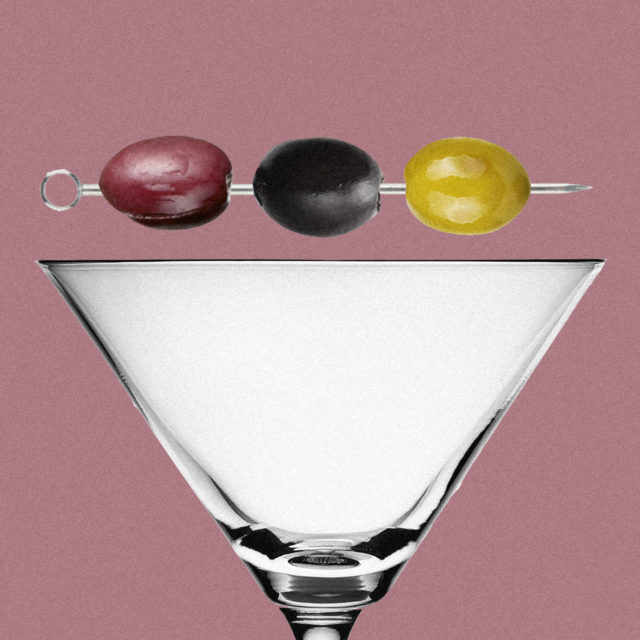“Olives go with everything,” says Ron Sahadi, managing director of Sahadi’s, a Brooklyn grocer specializing in Middle Eastern foods since 1948. “Some are salty, some meatier, some firm, and some softer with herbs. You can find the right one and make it work with any cuisine from any part of the world.”
Versatile and varied, olives are a graceful complement to cheeseboards, salads, pastas, and Martinis. Jarred supermarket options will do the trick in a pinch, but you deserve better. Fortunately, there’s a wide world of olives out there.
Humans have been cultivating the fruit (yes, fruit!) for millennia, and they are prominent in cuisines from Spain to Syria. Most places that grow great wine are also optimal for olives, and, these days, olive trees dapple the Mediterranean, Latin America, and California.
As with any agricultural product, how olives are grown and harvested affects their appearance, flavor, and texture. Green olives tend to be firm and mild-flavored, while darker purple or black olives are usually richer and meatier-tasting.
“The color of an olive is an indication of its ripeness,” Hannah Howard writes in Serious Eats. “Green olives ripen and become black olives. Or rather, they transform from green to light brown, to a vibrant red and purple, to the deepest, darkest black. In general, the darker the olive, the riper it was when it was plucked from the tree.”
All olives are cured before they’re ready to be eaten. (Olives fresh off the tree are extremely bitter.) The process is similar to fermentation, converting the fruits’ natural sugars into lactic acid.
Kalamata and Castelvetrano olives are among the most popular varieties at Sahadi’s, but the store’s expansive olive bar includes rotating bins of green, purple, black, herbed, mixed, pitted, and stuffed options as well. The next time you are faced with a similarly impressive spread, ask yourself some questions. Do you want to snack on olives straight? Serve them in a cocktail? Pair them with cheese?
“My favorite olive and cheese pairings are the regional ones,” Christine Clark, VinePair contributor and certified cheese professional, says. “Sure, you can pair a fresh goat cheese with Kalamata olives and it will probably be delicious, but if you pair a briny Greek feta with some Kalamata olives, you’ll be in heaven… If you don’t have the chance to try the pairing beforehand or just don’t want to have to think too hard about it, regional is the way to go.”
We dug into some of the top varieties available in the U.S. to help you choose the best olives for your drinking, cooking, and snacking needs.
Kalamata
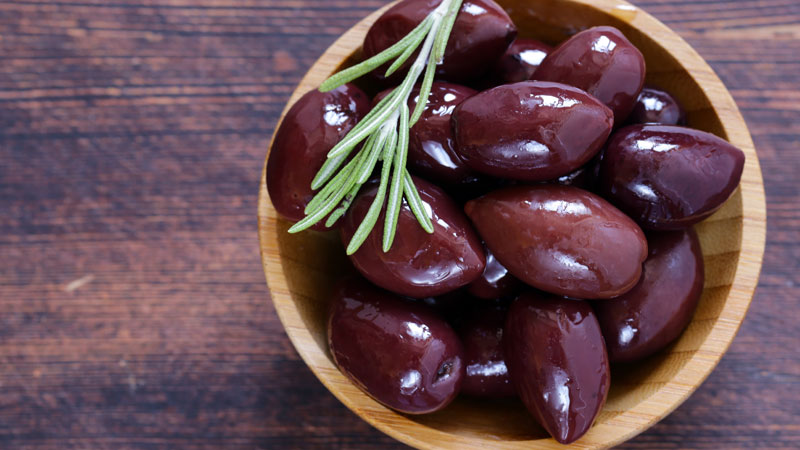
Greeks reportedly eat more olives per capita than any other Europeans, and yet they kindly export these purple-black, almond-shaped varieties to America en masse. “Kalamata is the go-to olive in our store,” Sahadi says.
Kalamatas are excellent in green and grain salads, tapenades, and pasta sauces like Italy’s Puttanesca. Look for varieties packed in olive oil or red wine vinegar. If they taste too salty or oily at first bite, feel free to wipe these or any olives off with paper towels, Sahadi advises.
Morrocan
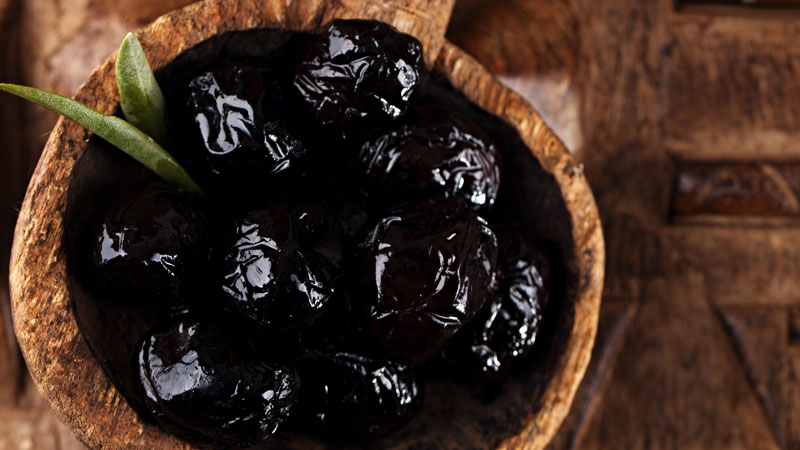
Morocco produces an array of olives, but those labeled “Moroccan” in U.S. grocery stores are typically a small black variety with creased skin. Dry-cured in salt and then packed in oil, these are potent and flavorful, and thus not the best option for those who are on the fence about olives.
Enthusiasts, however, might try tossing Moroccan olives in a green salad studded with rotisserie chicken and dressed in a Dijon vinaigrette, or serve them alongside salty halloumi.
Castelvetrano
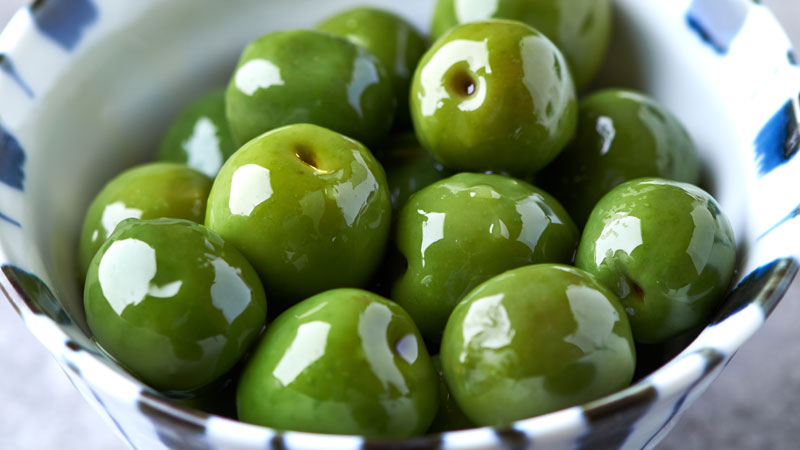
“One of the most popular olives we have right now are Castelvetrano,” Sahadi says. Big, round, and bright green, “they’re a firm, meaty olive that tastes a little bit nutty,” he adds. Castelvetranos hail from Sicily and are a lovely accompaniment to chèvre and crackers as part of an aperitivo spread, or atop an Aperol Spritz.
Sahadi also notes that Castelvetranos are often served or sold pitted, “and if you’re lazy like me, that’s great.”
Gaeta
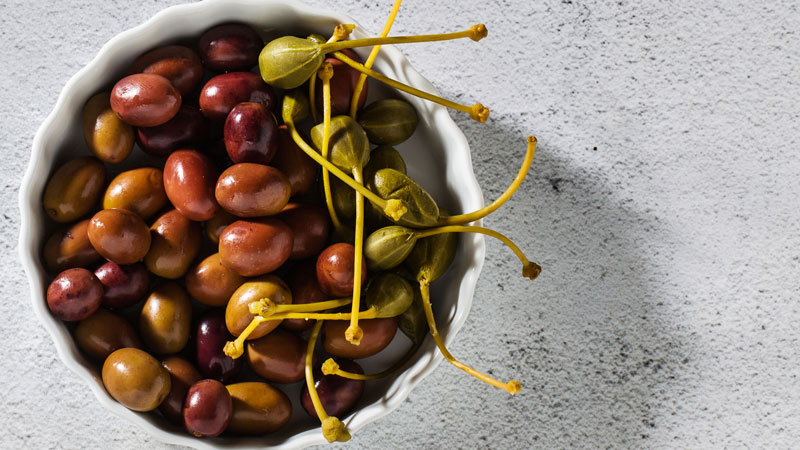
These round, purplish Italian olives can be either salt- or oil-cured, so don’t be distraught if you find both smooth and wrinkled options. Like Kalamata olives, they are briny and meaty, and good in pasta and pizza. You can also serve them in olive oil for straight snacking, but we don’t recommend slipping one into a cocktail — it will overpower the drink.
Niçoise
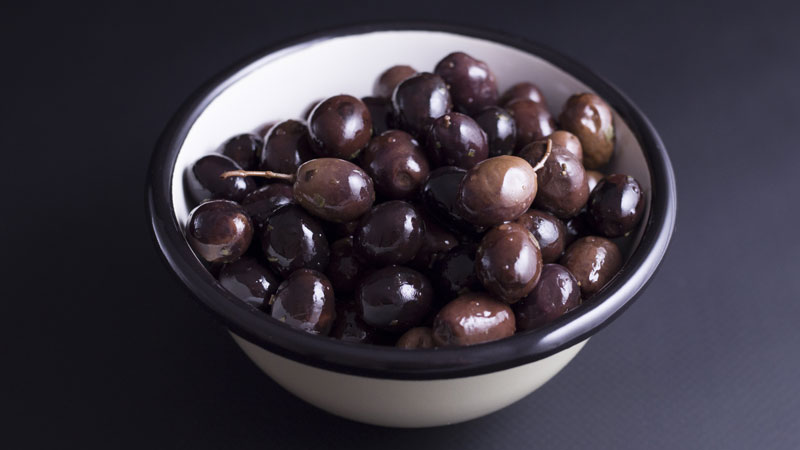
There are subtle floral and anise notes to these dark-hued olives from the south of France. They are flavorful without being overpowering, making them perfect for tapenades or, of course, a salade Niçoise made with haricots verts, tomatoes, hard-boiled eggs, oil-cured tuna, and anchovies. “They’re soft but they’re not mushy, so they go great with a firmer cheese, like Parmesan,” Sahadi says.
Cerignola
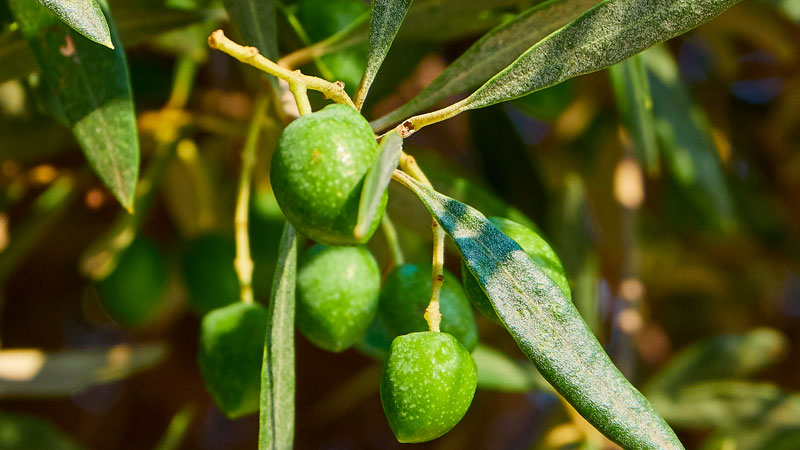
Big and buttery, these oversized green olives from Italy’s Puglia region are ideally suited to stuffing. Remove the pits and try filling them with cheese, garlic, salumi, or slivers of anchovies.
Because they are so meaty and large, Cerignolas also make a solid happy-hour snack. “Serve these in a small dish alongside a dry gin Martini,” suggests Mary-Frances Heck in Food & Wine.
Manzanilla
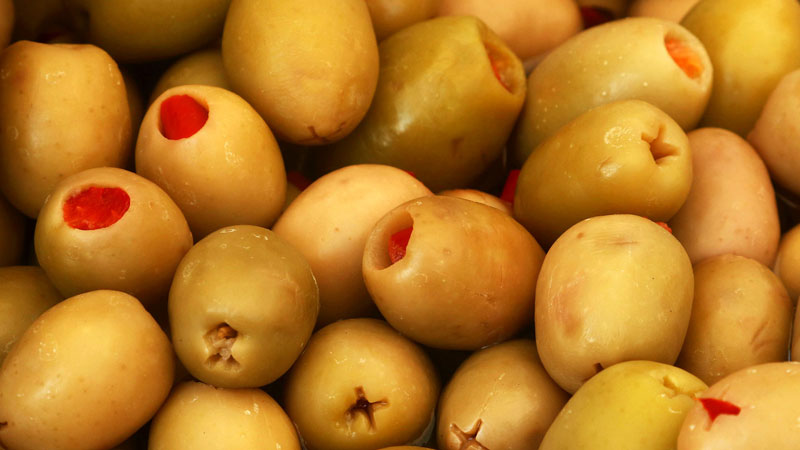
If you close your eyes and picture a round, pimento-stuffed green olive, you’re probably thinking of a Manzanilla. Originally from Spain, these mild-mannered, firm-fleshed options are available worldwide in jars and tins, or in brine on olive bars.
Add Manzanillas to your next Martini or spritz, or, if you’ve got quality Manzanillas and want a classic pairing, serve them with crisp Fino sherry.
Picholine
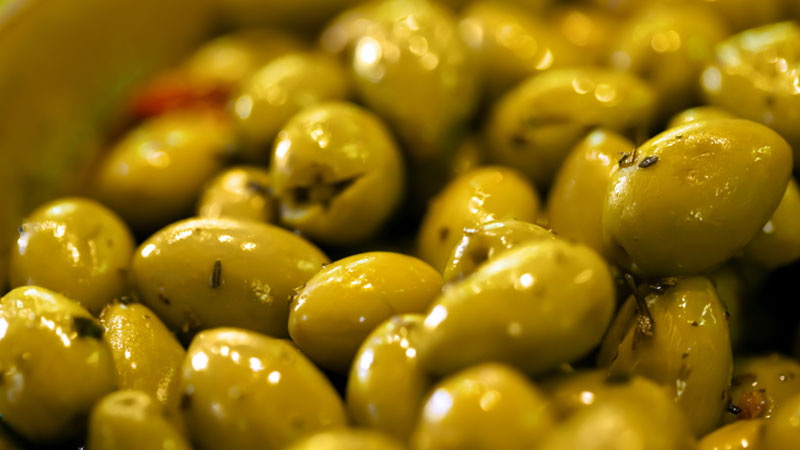
Toss these crisp, green, elegant French olives into stews and tagines, or serve them with seafood or salads. Their faintly nutty flavors are mild enough to eat straight with a glass of white wine or bubbles, but also substantial enough to stand up to cooked dishes. Toss them into stews or tagines, or serve Picholines with seafood and salads.
